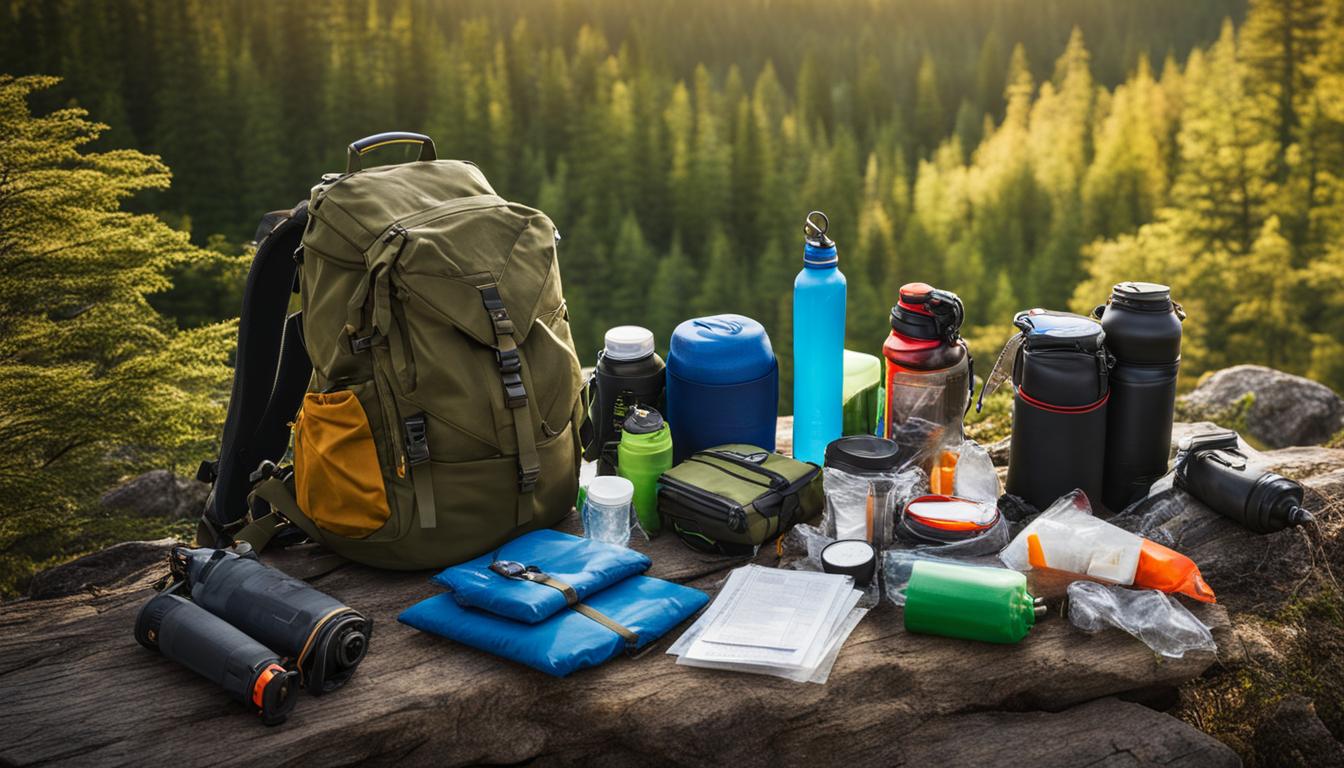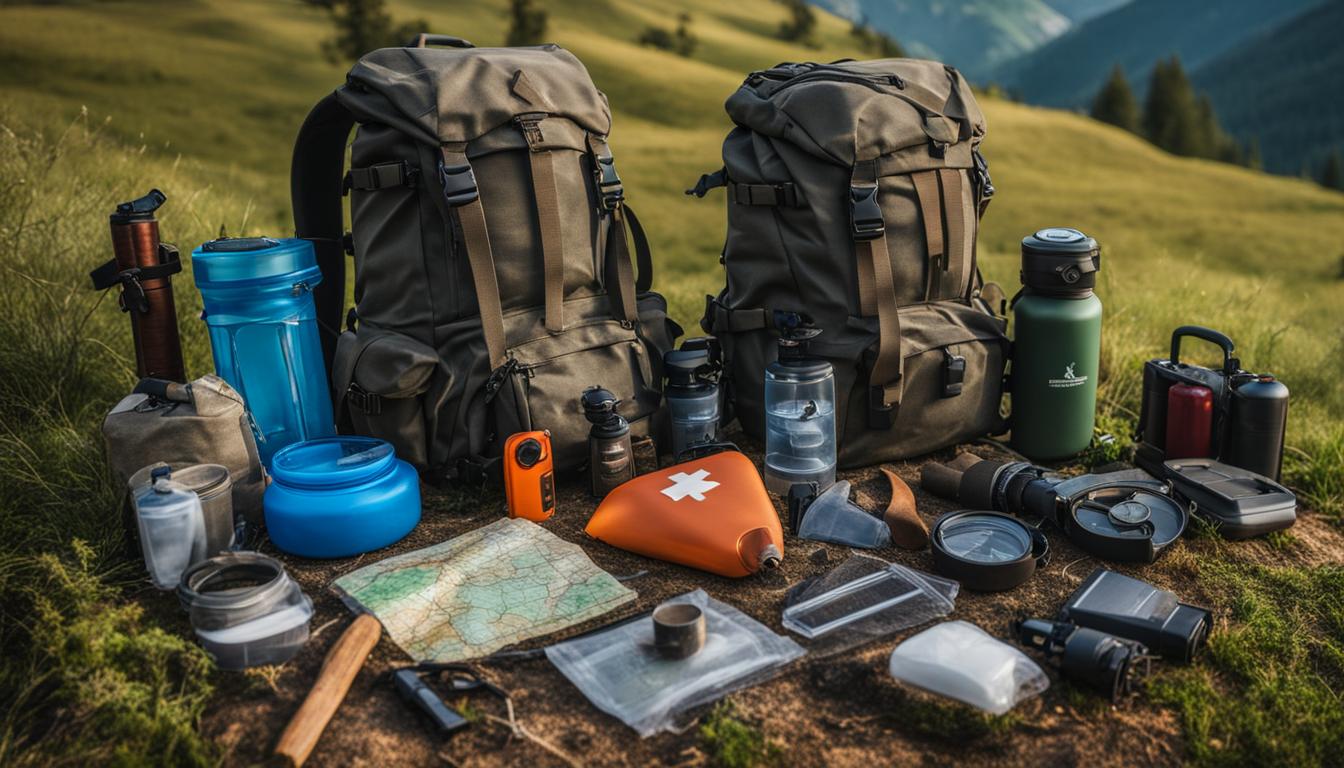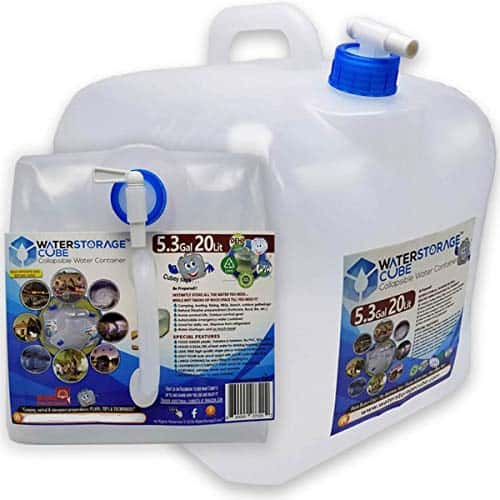When heading into the wilderness, it’s crucial to have the necessary survival skills at hand. These abilities can greatly impact your capacity to navigate and endure difficult circumstances. This guide will delve into five essential survival skills that all outdoor enthusiasts should be proficient in: constructing shelter, igniting a fire, sourcing food and water, basic first aid, and signaling for assistance. Mastering these skills can increase your chances of survival and excel in any outdoor setting.
Key Takeaways:
- Mastering essential survival techniques is crucial for wilderness adventures.
- Building shelter, starting a fire, procuring food and water, foundational first aid, and signaling for help are fundamental skills to develop.
- Practice these skills to increase your chances of survival and navigate challenging situations.
- Being prepared with survival essentials can make a significant difference in your outdoor experiences.
- Enhance your confidence and thrive in any outdoor scenario by mastering these essential survival techniques.
The Importance of Survival Skills in the Backcountry
When exploring the backcountry, being physically and mentally prepared is crucial. While gear plays a significant role in ensuring your safety, there may come a time when you are left with only your mind and body to rely on. That’s why it’s essential to master the five survival skills: building shelter, starting a fire, procuring food and water, foundational first aid, and signaling for help. These skills are fundamental for short-term and long-term survival, providing you with the knowledge and abilities needed to navigate through difficult circumstances.
Building a shelter is crucial for protecting yourself from the natural elements in a survival situation. The first step is to find a suitable location that is dry, flat, and protected from the wind. Water proximity, shoreline and low ground avoidance, high altitudes and slopes, and widowmakers should all be considered when selecting a location for your shelter. Using natural materials such as sturdy branches for the frame, foliage for the roof, and rocks for anchoring can help create a functional and secure shelter. Insulation materials like pine needles and moss can be used to regulate temperature inside the shelter. By mastering the art of shelter building, you can ensure your safety and comfort in the wilderness.
The ability to start a fire is a crucial survival skill that provides warmth, light, and the ability to cook food. In a survival situation, it’s important to select a good location for your fire, away from overhanging branches and other flammable materials. Gathering firewood, which includes fuelwood, kindling, and tinder, is essential for sustaining the fire. Utilizing tools like a hatchet or knife, or even improvising with natural materials, you can construct a fire without a fire starting kit. Basic fire-making techniques include using a lighter, flint and steel, magnifying glass, or friction-based methods. By mastering the skill of fire-making, you can ensure your survival and comfort in the wilderness.
Sourcing clean drinking water and procuring food are essential for sustaining yourself in the wild. Water purification techniques such as boiling, filtering, and using a solar still can make water safe for consumption. Identifying edible plants and fungi, and foraging for food can provide a source of nutrients and energy. Basic foraging skills, such as identifying edible plants and avoiding toxic ones, can be practiced in your backyard or local environment. While hunting and trapping can provide protein, it is an advanced skill that requires more experience and knowledge. By developing a solid understanding of procuring food and water, you can increase your chances of survival in the wilderness.
| Skill | Description |
|---|---|
| Building Shelter | Creating a secure and functional shelter using natural materials to protect yourself from the elements. |
| Starting a Fire | Mastering fire-making techniques to provide warmth, light, and the ability to cook food. |
| Procuring Food and Water | Sourcing clean drinking water and finding edible plants and fungi for sustenance in the wild. |
| Foundational First Aid | Administering basic first aid techniques to treat injuries and stabilize medical conditions in a survival scenario. |
| Navigation | Developing effective navigation skills to find your way back to safety when lost in the wilderness. |
| Signaling for Help | Using various signaling techniques to attract attention and increase your chances of being rescued in a survival situation. |
Building Shelter: Finding Protection in the Wilderness
When it comes to survival in the wilderness, one of the most important skills to master is building a shelter. Your shelter provides protection from the elements and can significantly impact your chances of survival. To effectively build a shelter, you need to consider several key factors.
Location: Select a suitable location for your shelter. Look for a spot that is dry, flat, and protected from the wind. Avoid low-lying areas prone to flooding, as well as areas with dead trees and branches that could fall and cause injury.
Materials: Use natural materials to construct your shelter, such as sturdy branches for the frame, foliage for the roof, and rocks for anchoring. Ensure your shelter is well-insulated by layering materials like pine needles and moss to regulate the temperature inside.
Design: Consider the type of shelter that best suits your environment and situation. Options include lean-tos, debris huts, and tarp shelters. Each design has its own advantages and challenges, so choose one that is appropriate for your specific needs.
By mastering the art of building a shelter, you can ensure your safety and well-being, even in the harshest of wilderness conditions.
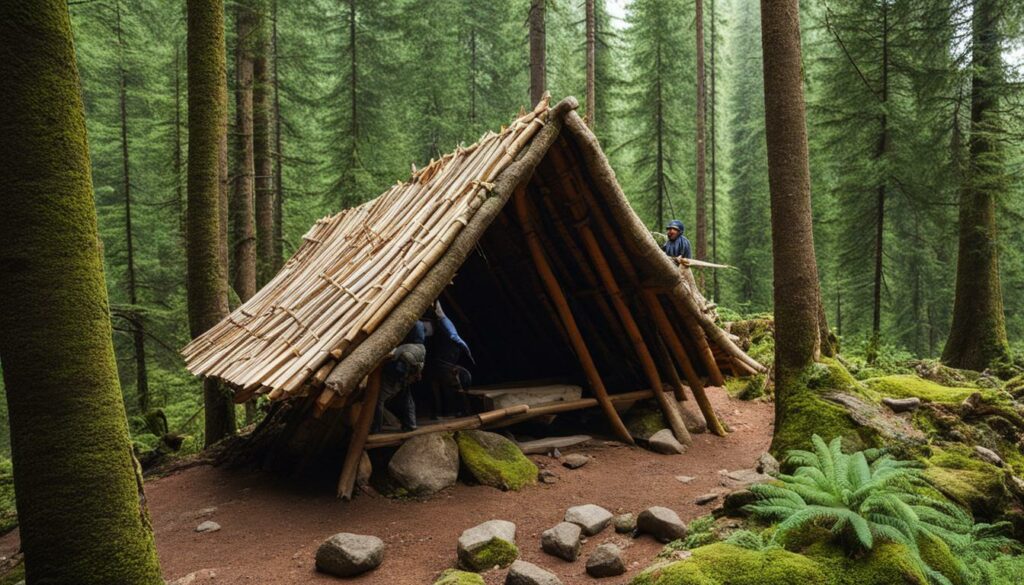
Table: Shelter Building Materials
| Materials | Advantages | Considerations |
|---|---|---|
| Sturdy branches | Durable and readily available | May require tools for gathering and preparation |
| Foliage | Provides insulation and camouflage | Requires regular maintenance and replacement |
| Rocks | Stabilizes the structure | Can be heavy and difficult to transport |
| Pine needles and moss | Regulates temperature inside the shelter | Requires a thick layer to be effective |
Starting a Fire: Mastering the Ancient Art
In a survival situation, the ability to start a fire is not only essential for providing warmth, but also for cooking food and providing light. Knowing how to start a fire can be a lifesaving skill, especially in wilderness environments where you might not have access to modern conveniences. In this section, we will explore various methods of fire starting, from using traditional tools to improvising with natural materials.
When it comes to starting a fire, location is key. You’ll want to select a safe spot away from any flammable materials, such as overhanging branches or dry grass. Clear the area and create a fire pit using rocks or a fire ring if available. This will help contain the fire and reduce the risk of sparks spreading.
Gathering firewood is the next step in starting a fire. You’ll need three types: fuelwood, kindling, and tinder. Fuelwood consists of larger logs that will sustain the fire, while kindling includes smaller sticks and twigs that will catch fire easily. Tinder, on the other hand, is highly flammable material that will ignite quickly, such as dry leaves, grass, or even a cotton ball soaked in petroleum jelly.
Once you have your fire pit and firewood ready, it’s time to choose a fire-starting method. You can use a lighter or matches if you have them, but it’s important to also know alternative methods in case you don’t. Flint and steel, for example, involves striking a piece of flint against a steel striker to create sparks. You can also use a magnifying glass to focus the sun’s rays onto a small pile of tinder, or create friction by rubbing two sticks together.
Common Fire-Starting Methods:
| Method | Pros | Cons |
|---|---|---|
| Lighter/Matches | Convenient and easy to use | Dependent on having a source of flame |
| Flint and Steel | Reliable and can create sparks in various weather conditions | Requires practice and skill to use effectively |
| Magnifying Glass | Doesn’t require additional tools | Dependent on sunlight and clear conditions |
| Friction-Based Methods | Can be done with natural materials | Requires physical effort and practice to master |
Remember, starting a fire responsibly is crucial. Always ensure that you have enough water or fire suppression equipment nearby to extinguish the fire completely before leaving the area. Practice these fire-starting methods in controlled environments before attempting them in a survival situation, and always prioritize safety above all else.
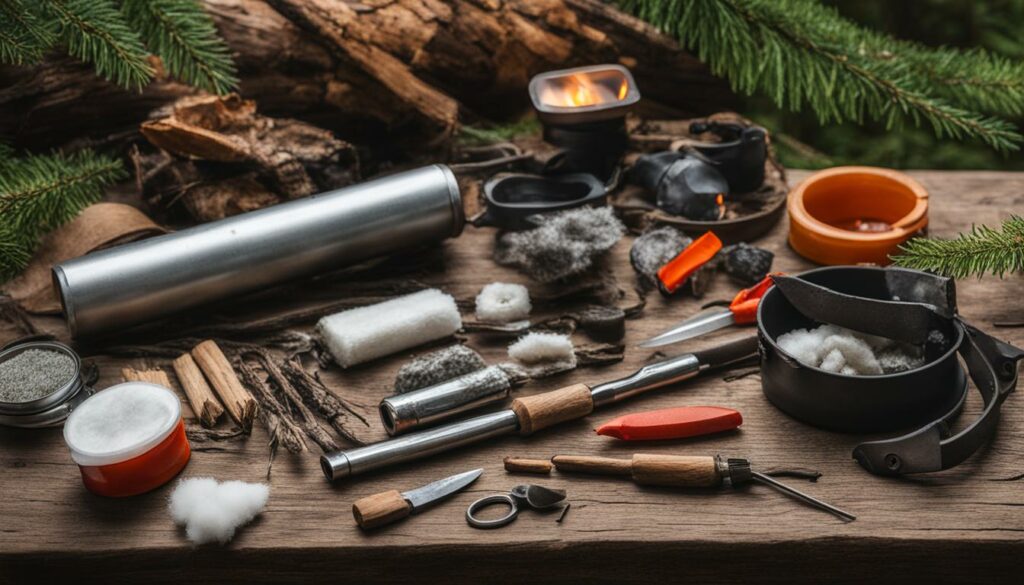
Procuring Food and Water: Sustaining Yourself in the Wild
When venturing into the wilderness, it’s essential to know how to sustain yourself by procuring food and water. This skill is crucial for your survival in the wild. By learning various techniques and methods, you can ensure that you have the necessary resources to stay nourished and hydrated.
Procuring Water:
In a survival situation, finding a clean and safe water source is vital. However, water found in the wilderness is not always safe for consumption. It is essential to purify it before drinking to avoid waterborne illnesses. Here are some methods you can use to procure clean drinking water:
- Boiling: Boil water for at least five minutes to kill any harmful microorganisms.
- Filtering: Use a water filter or create a makeshift filter using sand, gravel, and cloth to remove impurities.
- Solar Still: Set up a solar still to collect water condensation from plants or damp soil.
Procuring Food:
When it comes to procuring food in the wild, there are various options available. However, it is crucial to have proper knowledge and skills to identify edible plants, fungi, and safe hunting practices. Here are some ways you can procure food in the wilderness:
- Foraging: Learn to identify edible plants and fungi in your surroundings. Be cautious and avoid consuming any toxic or poisonous species.
- Fishing: Set up fishing lines, nets, or traps to catch fish in nearby water bodies.
- Hunting and Trapping: If you have the necessary skills and equipment, hunting and trapping can provide a source of protein. However, it is important to follow local hunting regulations and ethical practices.
Remember, when procuring food and water in the wild, always prioritize safety and ensure that your sources are clean and free from contamination. It is also essential to be mindful of your surroundings and practice responsible foraging and hunting techniques.
Table: Comparison of Water Purification Methods
| Method | Effectiveness | Pros | Cons |
|---|---|---|---|
| Boiling | Highly effective at killing microorganisms | Simple and requires only a heat source | Time-consuming and may not remove chemical contaminants |
| Filtering | Effectively removes impurities and sediment | Can be portable and lightweight | May not eliminate all bacteria and viruses |
| Solar Still | Collects clean condensation from water sources | Requires minimal equipment | Slow process and may not yield large quantities of water |
Table: Comparison of Water Purification Methods
By understanding the different methods of procuring food and water, you can ensure your survival in the wilderness. Remember to always prioritize safety, learn and practice proper techniques, and be respectful of the environment.
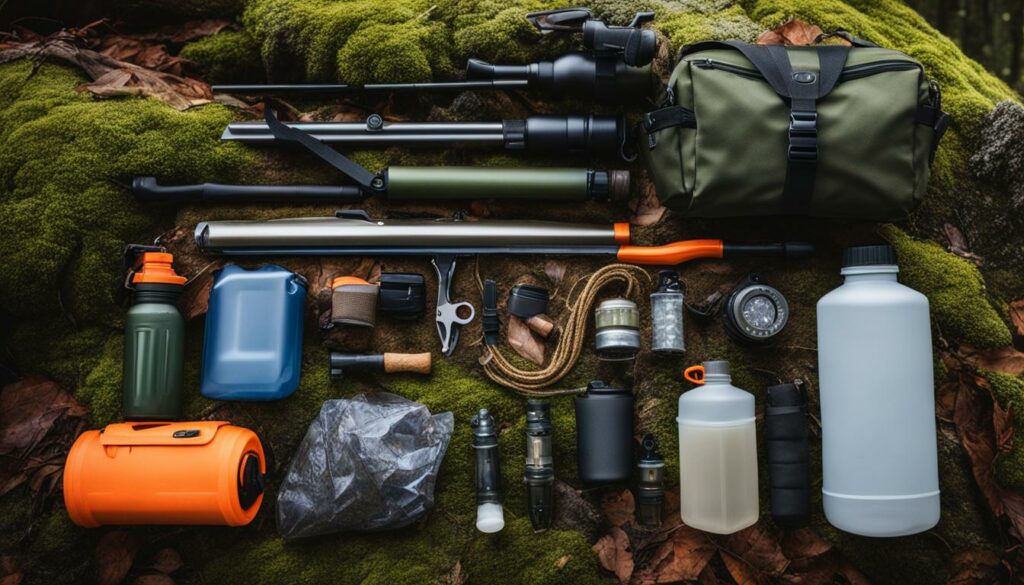
Foundational First Aid: Treating Injuries in the Wild
When facing the challenges of the wilderness, accidents and injuries can happen. That’s why it’s essential to have a strong foundation in first aid to treat injuries and stabilize medical conditions. As outdoor enthusiasts, we must be prepared to handle various medical emergencies in remote locations where help may not be readily available.
From basic CPR and controlling bleeding to treating burns and stabilizing limbs, foundational first aid skills are crucial for wilderness survival. It’s important to practice these skills with a partner or family member to ensure confidence and proficiency in administering first aid when it matters most.
Additionally, knowing how to identify soothing plants for insect stings and abrasions can provide relief in wilderness environments. By staying calm, taking swift action, and utilizing our knowledge of foundational first aid techniques, we can effectively address medical emergencies and increase our chances of survival in the wild.
“In a survival scenario, knowing how to administer basic first aid can be the difference between life and death.” – Outdoor Survival Expert
Table: Essential First Aid Skills for Wilderness Survival
| First Aid Skill | Description |
|---|---|
| CPR | Cardiopulmonary resuscitation (CPR) is a life-saving technique used to revive someone experiencing cardiac arrest by combining chest compressions and rescue breathing. |
| Controlling Bleeding | Properly applying pressure and using a tourniquet (as a last resort) to stop severe bleeding can prevent the loss of too much blood. |
| Treating Burns | Knowing how to assess the severity of burns and administer appropriate first aid, such as cooling the burn with water and covering it with a sterile dressing, can prevent infection and promote healing. |
| Stabilizing Limbs | Immobilizing fractures and dislocations using splints or improvised materials can prevent further damage and reduce pain. |
| Soothing Plants | Identifying and utilizing soothing plants, such as aloe vera or plantain, for insect stings and abrasions can provide relief and aid in the healing process. |
By equipping ourselves with the necessary first aid skills, we can handle injuries and medical emergencies effectively, ensuring our safety and increasing our chances of survival in the wilderness.
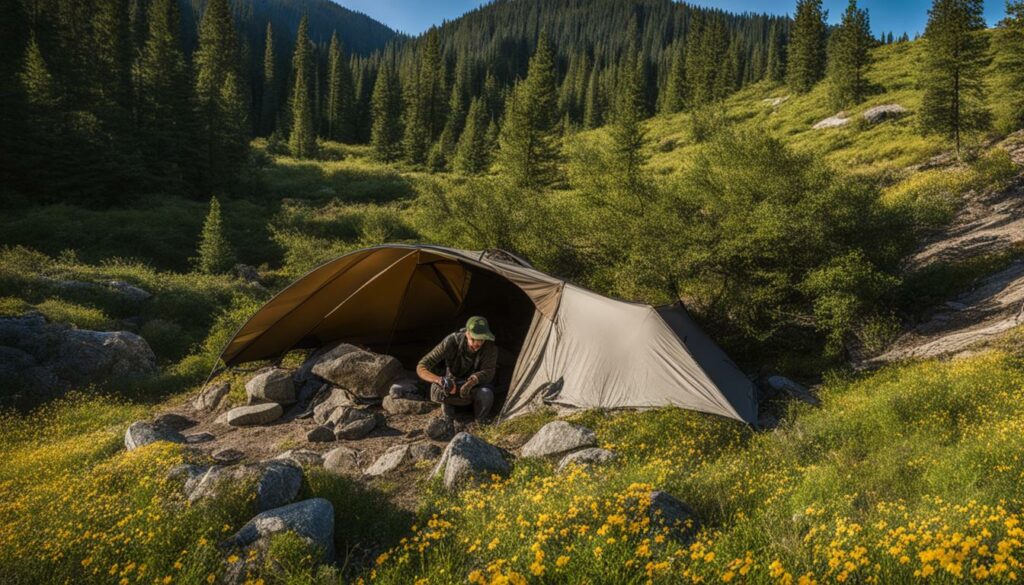
Navigation: Finding Your Way Back to Safety
When venturing into the great outdoors, mastering navigation skills is essential for ensuring your safe return. Whether you’re exploring remote wilderness or navigating through an urban environment, being able to find your way back to safety is crucial. In this section, we will explore various techniques and tools that can help you navigate confidently and effectively.
One of the most basic navigation tools is a compass. With a compass, you can determine your direction and navigate towards a specific destination. By understanding how to read a compass and interpret map data, you can navigate accurately even in unfamiliar terrain. It’s important to familiarize yourself with different types of compasses and practice using them prior to your outdoor adventures.
In addition to a compass, maps are another valuable navigational resource. Topographic maps provide detailed information about the terrain, including elevation, water sources, and landmarks. By studying and understanding these maps, you can plan your route, identify potential obstacles, and ensure a safe journey. Always carry a physical map as a backup, as electronic devices may run out of battery or lose signal.
Common Navigation Techniques
- Reading the Landscape: Observing and interpreting the environment can provide valuable clues for navigation. Pay attention to distinctive landmarks, such as mountains, rivers, or unique structures, to help orient yourself.
- Using Celestial Markers: If you find yourself without a compass or map, celestial markers can guide your way. The North Star, for example, can help you determine a general northward direction. Understanding basic celestial navigation can be particularly useful during nighttime outings.
- Tracking Animal Signs: Animals often follow established paths and trails, which can indicate potential routes to follow. Study animal footprints, markings, and other signs to navigate through the wilderness.
Remember, navigation skills require practice and experience. Start by honing your skills in familiar environments before venturing into more challenging terrain. By mastering navigation techniques and using the right tools, you can confidently explore the outdoors while staying on track and finding your way back to safety.
The Art of Signaling for Help in the Wilderness
When facing a dire situation in the wild, knowing how to signal for help can be a lifesaver. With the right techniques and equipment, you can increase your chances of being rescued and ensure a safe return. Here, we will explore various methods of signaling for help and the essential tools you need to carry in your survival gear.
Signaling Devices:
To attract the attention of potential rescuers, it’s important to have signaling devices readily available. Whistles, mirrors, and flashlights are effective tools that can be easily carried in your backpack or pocket. These devices can create high-pitched sounds, reflective flashes, or bright beams of light, which can be spotted from a distance. Remember to check your signaling devices regularly to ensure they are functional and ready for use in an emergency.
Creating Visible Smoke:
In a survival situation, creating visible smoke is an effective way to signal for help during the day. By adding green vegetation or other natural materials to your fire, you can produce thick, white smoke that stands out against the surrounding environment. Additionally, using the universal distress signal of three evenly spaced smoke puffs at regular intervals can help rescuers identify your need for assistance.
Morse Code:
“… .- — ..- – …. . .-. / …. . .-.. .–. — .– …. . -.-.–“
Another signaling technique you can use is Morse code, a system of dots and dashes. Morse code can be sent by audio signals, visual signals, or even by tapping on a surface. By learning the Morse code alphabet and common distress signals, you can effectively communicate your need for help. Practice this skill in advance to ensure that you can confidently transmit messages when it matters most.
By mastering the skill of signaling for help, you can significantly improve your chances of being rescued in a survival situation. Remember, having the right tools and knowledge is essential, so make sure to include signaling devices in your survival gear and practice using them. Stay calm, stay prepared, and stay hopeful – help is on the way!
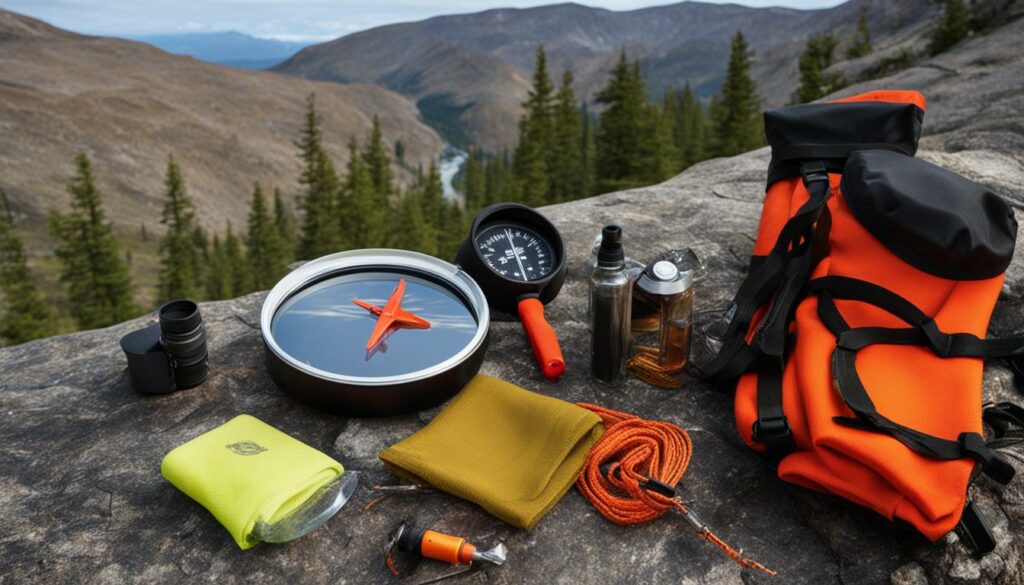
Conclusion
In conclusion, mastering essential survival techniques is crucial for anyone venturing into the wilderness. These emergency survival skills and wilderness survival tips are the key to ensuring your safety and well-being in challenging outdoor scenarios. By developing proficiency in these survival essentials, you can confidently navigate through difficult circumstances and increase your chances of survival.
Building shelter provides protection from the elements, starting a fire offers warmth and sustenance, and procuring food and water ensures your long-term survival. Foundational first aid skills enable you to treat injuries, while navigation techniques help you find your way back to safety. And when all else fails, signaling for help can greatly enhance your chances of being rescued.
Remember, preparation is key. Take the time to learn and practice these survival techniques before embarking on your next adventure. By doing so, you’ll be equipped with the knowledge and skills necessary to thrive in the wild. So, embrace the challenge, embrace the unknown, and let these survival techniques be your guiding light in the great outdoors.
What are the essential survival techniques that are covered in your guide?
In our guide, we cover all the essential wilderness survival skills to help you thrive in the great outdoors. From building a shelter and finding safe drinking water to navigating with a map and compass, our comprehensive guide has you covered for all emergency situations.
FAQ
What are the essential survival skills to master?
The essential survival skills to master include building shelter, starting a fire, procuring food and water, foundational first aid, navigation, and signaling for help.
Why are these survival skills important?
These survival skills are important because they can greatly enhance your chances of survival in the wilderness and enable you to navigate and thrive in any outdoor scenario.
How can I build a shelter in the wilderness?
To build a shelter in the wilderness, find a suitable location and use natural materials such as sturdy branches, foliage, and rocks for construction.
What are the basic techniques for starting a fire in a survival situation?
Basic fire-starting techniques include using a lighter, flint and steel, magnifying glass, or friction-based methods. It’s important to select a safe location and gather firewood.
How can I procure food and water in the wild?
You can source clean drinking water by boiling, filtering, or using a solar still. Foraging for edible plants and fungi is a way to procure food. Hunting and trapping are more advanced skills.
What foundational first aid skills should I learn for survival situations?
Foundational first aid skills to learn include CPR, controlling bleeding, treating burns, stabilizing limbs, and identifying soothing plants for insect stings and abrasions.
How can I navigate in the wilderness?
Basic navigation tools such as maps, compasses, and GPS trackers can help. Celestial markers and reading the landscape can also assist in finding your way back to safety.
How can I signal for help in a survival situation?
Carrying signaling devices like whistles, mirrors, and flashlights can aid in attracting attention. Creating visible smoke and using Morse code are effective ways to signal for help.

